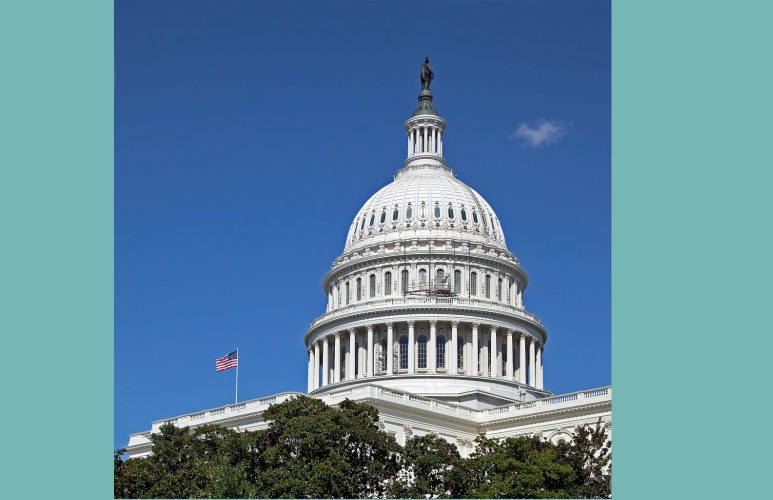By Geoffrey Paul and Steve Taylor
Applying for earmark funding was a confusing and uncertain process this year, even for experienced nonprofits. Unexpected changes and deadlines added to the uncertainty, which made applying for Fiscal Year 2024 earmarks feel like being thrown a curveball. Is it still worth it for nonprofits? Unequivocally, Yes.
Just days before applications opened, earmarks were eliminated from 30 federal funding “accounts,” including all the funding streams in the federal Labor, Health and Human Services, and Education departments. These agencies have carried the lion’s share of nonprofit earmarks in previous years and eliminating these departments as options for U.S. House of Representatives earmark requests had the potential to disproportionately and significantly hurt nonprofits. An array of other changes made nonprofit earmarks harder to secure, and some categories of nonprofits were eliminated altogether.
These changes, crafted by the new majority out of the public view, even left many members of Congress on both sides of the aisle stunned. Nonprofits leaders were sent scrambling to identify a path forward for applications some had spent months or years designing. Some gave up. Others looked to the U.S. Senate or alternative, less to appealing funding streams.
But, abruptly shifting a request to another bill can carry hidden complications. For example, nonprofit leaders who previously received earmark funds through the U.S. Department of Health and Human Services were disappointed that the working knowledge they had built up over the years couldn’t be applied for Fiscal Year 2024 and, instead, they were faced with navigating the complex processes in the Department of Housing and Urban Development. Many nonprofits stepped up to the challenge.
In fact, the Congressional Data Coalition just released a master list of all the earmarks requested by members of Congress — a whopping 5,067. It appears that approximately half of those were for nonprofits. And, those are only from the House of Representatives under the new, very restrictive rules.
The new House rules will have a cascading impact in the Senate, where Labor-HHS-Education earmarks are still allowed. Many Labor-HHS earmark applicants turned to their senators. The resulting surge in senate Labor-HHS applications will complicate an already highly competitive process. Last year, perhaps one in three earmark submissions by senators to the Senate appropriations committee was approved. The heightened competition will be especially challenging for nonprofits applying for Senate earmarks in the most populated states.
It will be some time before the data can be crunched to measure the overall impact the new House rules had on earmarks. We will see which of the 5000+ House earmarks were approved by the House appropriations committee by mid-June, if the new Chairwoman Kay Granger (R-Texas) has her way. (She will.) The Ranking Member Rosa DeLauro (D-Conn.) is reportedly collaborating with Granger on earmarks. But who knows when the Senate appropriations committee will release their list? The Senate appropriations committee has new leadership — Chairwoman Patty Murray (D-Wash.) and Ranking Member Susan Collins (R-Maine). So past cycles only go so far toward forecasting the timing of the committee’s release.
A baseline uncertainty seems to be the new normal, at least in the near term.
Nonprofit leaders who are planning their earmark strategies for Fiscal Year 2025 – and yes, many already are – will have to embrace an environment of known unknowns because as we’ve seen, the rules for earmarks can change anytime between now and next spring when legislators submit their next round of funding requests.
Ultimately, getting an earmark request advanced to the appropriations committee can still be done. Our preliminary review of the earmarks submitted to the House Appropriations Committee reveals a couple of thousand nonprofit earmarks worth hundreds of millions of dollars, if not more. It will be matched in the Senate. Despite new rules and uncertainty, earmarks still provide a significant opportunity for nonprofits to access federal funds that would otherwise be out of reach.
Federal COVID relief funding is fading. Long-standing federal funding streams are likely to see some cuts next year. And, early data indicates private donations are down for many nonprofits in recent months. But the demands on nonprofits are greater than ever.
House earmarks alone present a half billion a year, or more in NEW funding for nonprofits. The opportunity is especially great for those armed with a base of knowledge that will help them navigate the new House rules next cycle.
If you missed this year’s application deadlines, there is next year. And it’s already time to start laying the foundation for a successful application. Nonprofits should take a swing, just be ready in case Congress throws the sector another curveball.
*****
Geoffrey Paul is government relations associate, Integer, LLC, where he consults with nonprofits on federal policies surrounding tax policy, financial services, federal appropriations and earmarks. Steve Taylor, principal, Integer, LLC, spent a decade on staff in the U.S. Senate and 15 years as head of government relations and public policy at United Way Worldwide.
